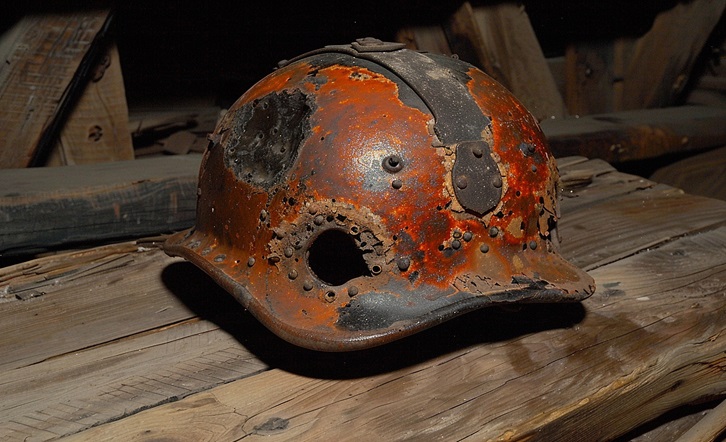The Lost Art of African Ironworking: Uncovering the Techniques of Ancient Metallurgists
The African continent holds a rich and complex history of metallurgy that dates back thousands of years, marked by the advanced ironworking techniques of ancient African civilizations. Long before industrial-scale iron production took root in Europe, African blacksmiths and metallurgists were pioneering the extraction, smelting, and crafting of iron tools, weapons, and intricate artifacts. This article explores the lost art of African ironworking, examining the sophisticated techniques developed by ancient African metallurgists and highlighting Africa’s role as a global pioneer in metalworking.
Ironworking in Ancient Africa: A Forgotten Legacy
Ironworking in Africa has a deep historical root, with evidence suggesting that African blacksmiths were among the earliest to develop iron smelting independently. The Nok culture of Nigeria, dating back to 1000 BCE, is considered one of the earliest examples of African ironworking. These ancient metallurgists harnessed locally sourced iron ore, using furnaces to extract the metal in a process known as smelting. The art of forging iron tools, weapons, and ceremonial objects enabled societies to develop agriculture, defend against invaders, and expand their influence across the continent.
The lost art of African ironworking is often overshadowed by the focus on European advancements in the field. However, African metallurgists exhibited remarkable inventiveness, advancing the knowledge of iron smelting with highly localized techniques. The development of iron tools and weapons such as hoes, sickles, and spears marked the technological backbone of many African civilizations, from the Nubians of the Nile to the Bantu-speaking peoples of Central and Southern Africa. These early ironworkers developed techniques independently of other iron-producing cultures, showcasing unique methods that were well-suited to their environments.
The Science Behind African Ironworking
Ironworking is fundamentally the transformation of iron ore into metallic iron through the application of heat and chemical reduction. Ancient African metallurgists utilized furnaces made from locally available materials such as clay and refractory stones. These furnaces were engineered to achieve temperatures exceeding 1,200°C, required to separate iron from its oxide form.
Unlike European blast furnaces, African smelters utilized natural draft furnaces that relied on air currents to achieve high temperatures, while bellows were later introduced to increase air flow. Charcoal was used as the primary reducing agent, and its controlled burning inside the furnace facilitated the extraction of iron from its ore through carbon monoxide reduction. This resulted in spongy iron masses, known as blooms, which were later hammered and forged into functional objects.
The technical skills of African blacksmiths are evident in their ability to manipulate bloom iron, shaping it into durable tools and intricate designs through a process known as forge welding. The knowledge of heat treatment was also integral, as it improved the hardness and toughness of iron tools, ensuring their effectiveness for agricultural, military, and artisanal use.
Techniques and Innovations
- Bloomery Process:
- African ironworkers primarily used the bloomery process, a method of smelting iron ore in a furnace.
- The process involved heating iron ore with charcoal to produce a spongy mass of iron called a bloom.
- This bloom was then hammered to remove impurities, resulting in workable iron.
- Indigenous Furnace Designs:
- African furnaces varied in design, often reflecting local resources and needs.
- The furnaces were typically made from clay and could reach temperatures of over 1,200°C, sufficient to smelt iron ore.
- Some designs, like the natural draft furnaces of West Africa, were particularly efficient, using the wind to fuel the combustion process.
- Mastery of Carbon Content:
- African metallurgists demonstrated a sophisticated understanding of carbon content in iron.
- By controlling the amount of charcoal in the smelting process, they could produce different types of iron, from malleable wrought iron to harder steel.
Africa’s Role as Pioneer Metallurgists
The role of African ironworkers as pioneers in metallurgy is underscored by the sheer diversity of techniques and technologies developed across the continent. For example, the ironworking traditions of the Haya people in present-day Tanzania, known for their complex furnaces, demonstrated a high level of metallurgical knowledge. Their furnaces, excavated from sites like Uvinza, featured multiple bellows and intricate designs that allowed for efficient heat control, enabling the production of high-quality steel.
Similarly, the Meroitic civilization of Nubia, situated along the Nile River, developed large-scale ironworking industries. Meroitic iron smelting furnaces were capable of producing iron on an industrial scale, and archaeological findings suggest that the kingdom was a significant iron supplier across the African continent and beyond.
In Central Africa, the Katanga region (modern-day Democratic Republic of Congo) was renowned for its copper and ironworking industries. The blacksmiths of Katanga produced not only iron tools and weapons but also iron currency, demonstrating the economic significance of iron production. The knowledge of iron smelting was closely guarded, and blacksmiths were revered figures in society, often holding spiritual significance.
Metallurgy’s Role in African Civilization
Ironworking revolutionized African societies by enabling greater agricultural productivity, which in turn supported population growth and the expansion of trade networks. Iron tools such as hoes and plows improved farming efficiency, making it possible to cultivate larger tracts of land and support larger populations. This agricultural boom underpinned the rise of powerful African states, such as the Kingdom of Benin and Great Zimbabwe, whose economies were founded on iron-related industries.
Iron weapons also played a critical role in the military success of African civilizations. Spears, swords, and arrowheads forged from iron gave African armies a significant advantage in conflicts and territorial expansion. The advanced metallurgical techniques employed by African blacksmiths made their tools and weapons highly sought after, fueling trade networks that spanned across Africa and connected to the Middle East, India, and beyond.
Furthermore, African ironworking was not limited to utilitarian objects. Blacksmiths created ornate ironwork, used in rituals and as symbols of power and status. The ability to manipulate iron into intricate shapes and designs demonstrates the artistic and technical sophistication of African metallurgists. Ironworking also had spiritual and cultural significance, with blacksmiths often seen as possessing special knowledge and powers.
Rediscovering Africa’s Metallurgical Heritage
Despite the global significance of African ironworking, this history has often been marginalized or forgotten in mainstream narratives. The scientific achievements of African blacksmiths and metallurgists are only now being fully recognized, thanks to archaeological discoveries and the work of historians and metallurgists who are piecing together the lost techniques of these ancient craftsmen.
Recent excavations at ancient African ironworking sites have uncovered not only the physical remains of furnaces and tools but also the rich cultural context in which ironworking took place. These findings are helping to challenge long-standing stereotypes about Africa’s technological capabilities and highlight the continent’s important contributions to global history.
In uncovering the lost art of African ironworking, modern researchers are gaining valuable insights into ancient techniques that could inform contemporary metallurgical practices. The sustainable and resource-efficient methods used by African blacksmiths, particularly in their use of natural draft furnaces and locally sourced materials, offer lessons for modern-day iron production, where energy efficiency and environmental impact are major concerns.
Conclusion: African Metallurgists as Innovators
The lost art of African ironworking stands as evidence to the resourcefulness, innovation, and technical mastery of ancient African civilizations. By independently developing sophisticated iron smelting and forging techniques, African blacksmiths were global pioneers in metallurgy, laying the foundations for agricultural, military, and economic advancements across the continent.
Today, the rediscovery of these lost techniques not only enriches our understanding of Africa’s metallurgical heritage but also serves as a powerful reminder of Africa’s historical contributions to global technological development. The legacy of African metallurgists continues to inspire and inform modern science, proving that Africa has always been at the forefront of innovation.
Top of Form




